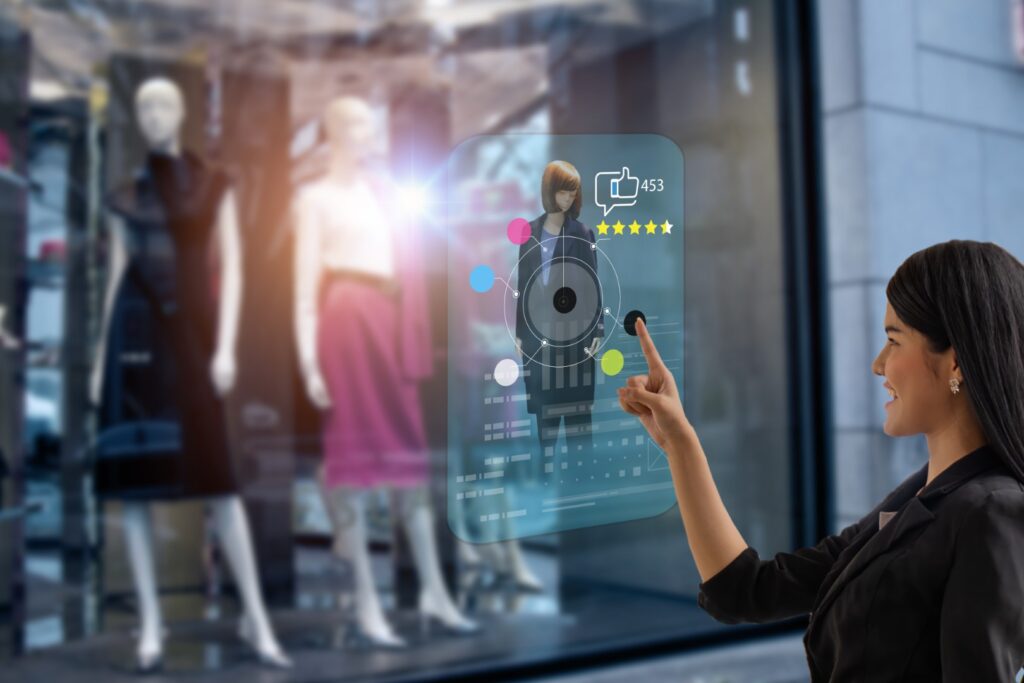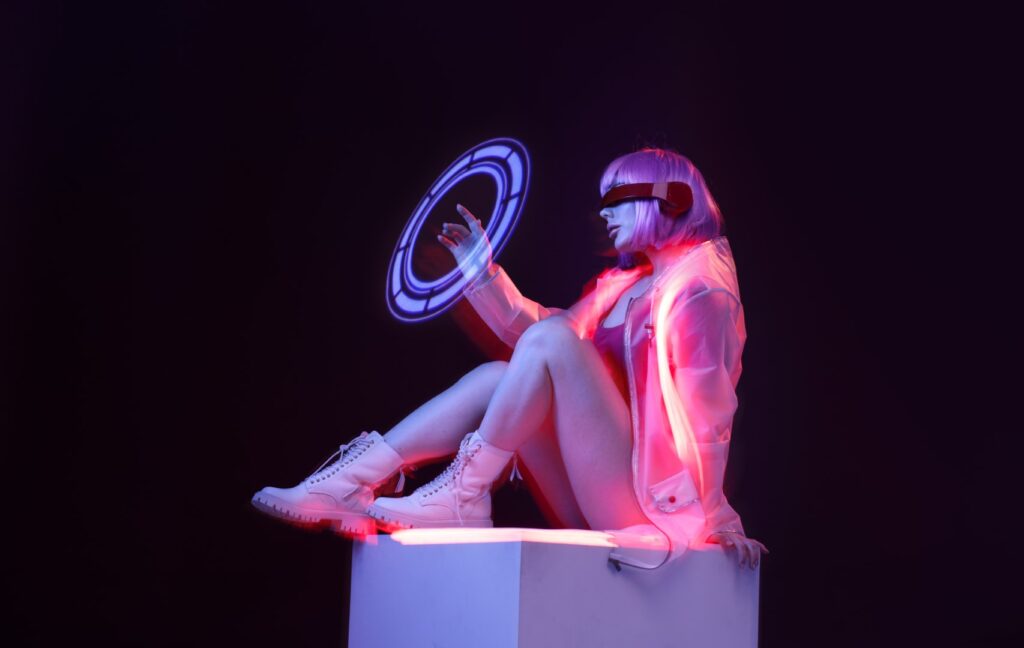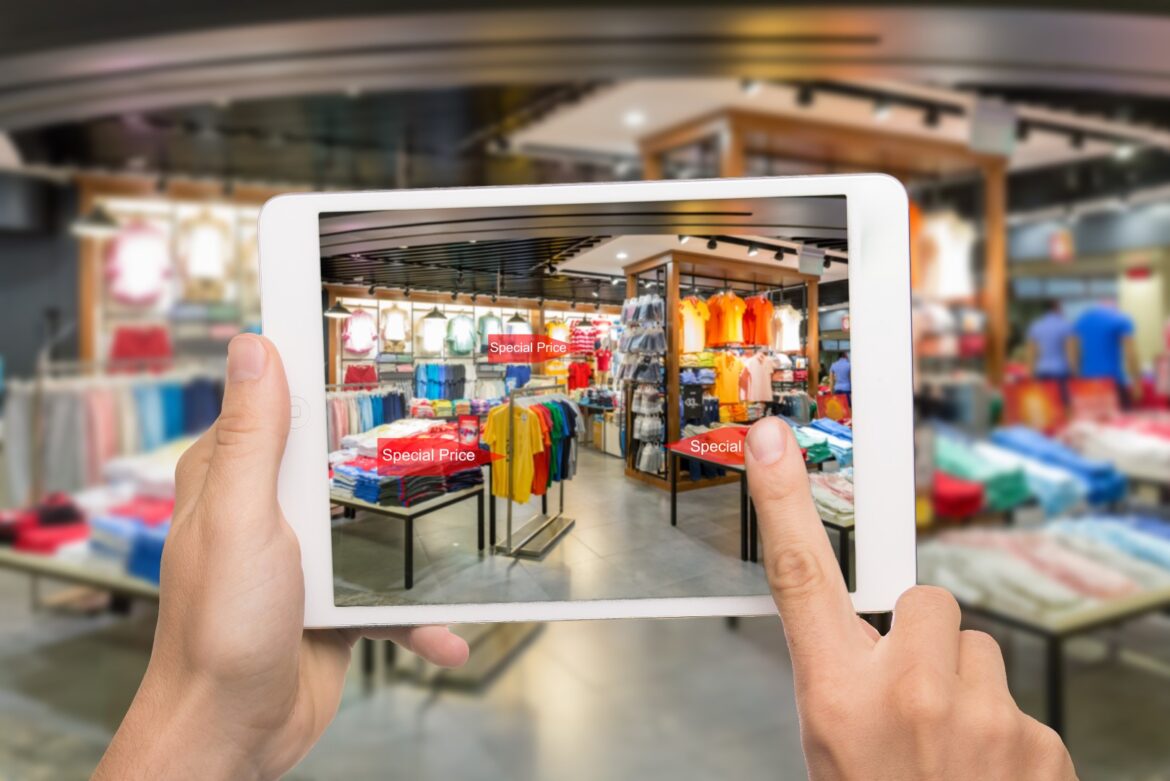The fashion sector, including e-commerce and fashion retail, has undergone a profound technological transformation. The influence of technology on fashion retail and e-commerce has increased more than ever with the rise of online purchasing. This article examines how technology has transformed the fashion business, as well as its advantages, disadvantages, and prospects for the future.

Impact of Technology on Fashion Retail
- The fashion retail sector has changed as a result of new customer-reach and shopping-experience technologies. Customers can virtually try on items and see how they appear without physically trying them on thanks to in-store technologies like augmented reality mirrors and interactive displays. In addition, smart mirrors with cameras and sensors can make tailored recommendations based on a customer’s past purchases and interests.
- The retail sector has also been changed by mobile apps, which enable shoppers to browse and buy things from their cell phones. Businesses can further improve the customer experience by using mobile apps to provide customers with personalized offers and incentives.
- Furthermore, fashion merchants are now better able to understand their clients and their tastes thanks to the use of big data and artificial intelligence (AI). Retailers may provide more individualized recommendations and suggestions, which will enhance sales and customer loyalty, by evaluating customer data and behavior.
Impact of Technology on E-commerce
E-commerce has benefited even more from technology, which now makes it possible for companies to reach a global clientele and run around the clock. Millions of people worldwide now have access to online shopping thanks to e-commerce sites like Amazon and eBay, and smaller shops may profit from the simplicity and convenience of selling goods online.
- E-commerce has also made it possible to practice drop shipping, in which retailers don’t maintain inventories and simply order goods from suppliers when a client places an order. This has made it less expensive and risky to launch an online store, which has facilitated market entry for business owners.
- Additionally, e-commerce companies are now able to customize their goods and improve the customer experience thanks to the usage of AI and machine learning. For instance, chatbots can offer immediate customer care and can produce personalized product suggestions based on past purchases and browsing patterns.
- E-commerce does, however, have some disadvantages, such as the inability to view or touch things in person before making a purchase. Also, as a result of product packaging and delivery, which add to carbon emissions, the expansion of e-commerce has raised more environmental issues.

Future of Technology in Fashion Retail and E-commerce
With breakthroughs in artificial intelligence, virtual reality, and blockchain expected to further change the sector, the future of technology in fashion retail and e-commerce is bright. Customers will be able to virtually try on clothing and other things thanks to virtual reality, and the supply chain will be more transparent and traceable because of blockchain technology.
Additionally, improvements in AI will allow retailers to provide even more tailored recommendations and ideas while also enhancing the effectiveness of inventory management and the supply chain. It’s also anticipated that more people would employ 3D printing to manufacture products and drones to transport packages.
How will technology bring change to the retail industry?
- Emphasis on Sustainability: As a result of rising consumer awareness of sustainability, businesses are beginning to offer eco-friendly items and lessen their carbon footprint. Future sustainability initiatives are likely to be more heavily influenced by technology, as merchants use data and AI to streamline their supply chains and cut waste.
- Increasing Usage of Virtual Reality (VR) and Augmented Reality (AR): Customers can already enjoy immersive shopping experiences thanks to the use of VR and AR technology in retail. These technologies are probably going to become increasingly more common in the future, with shops employing them to let customers digitally try on items or see how furniture will look in their homes.
In conclusion, technology has significantly changed the fashion sector, affecting both e-commerce and fashion retail. Although personalization and enhanced efficiency have been two of technology’s many benefits, it is still important to think about any negative effects and work towards ethical and sustainable business practices in the future.


